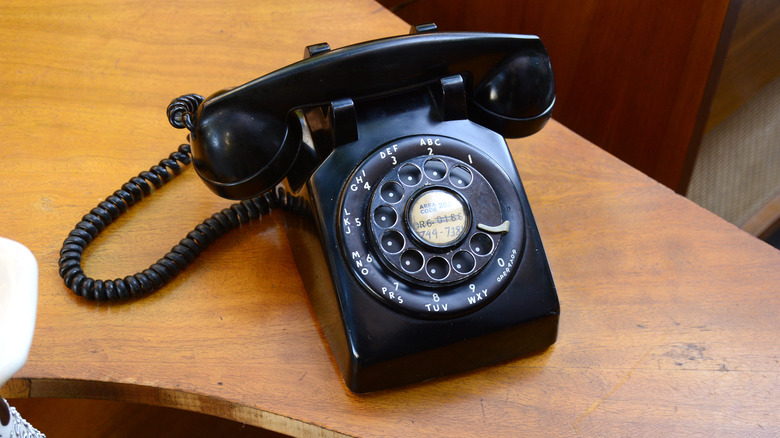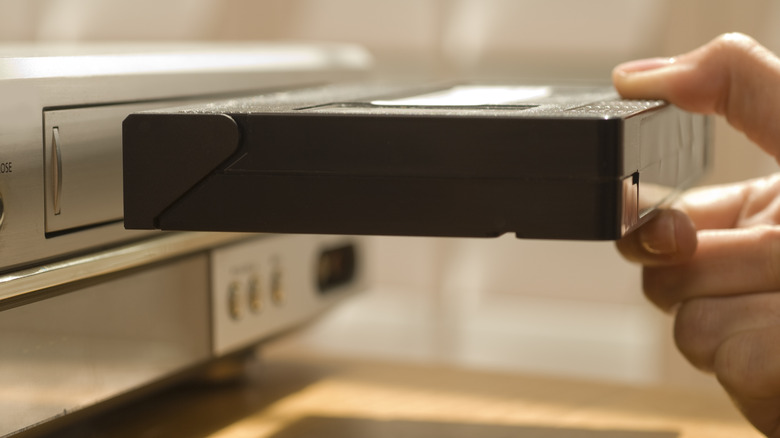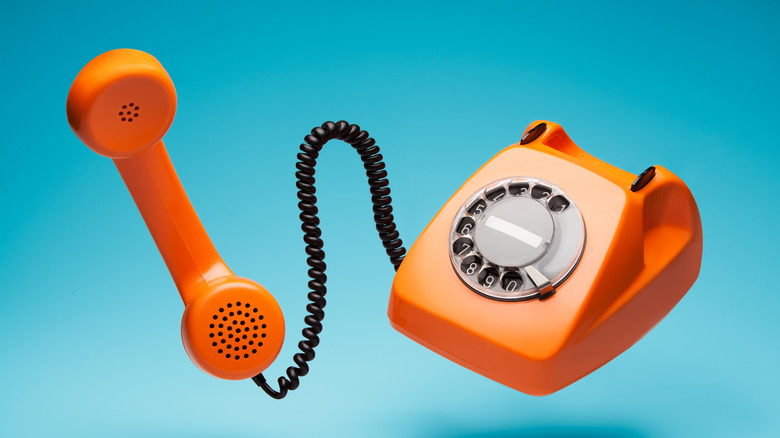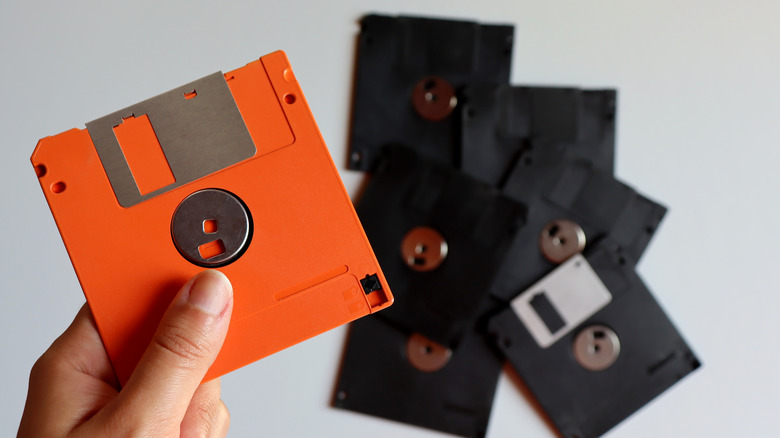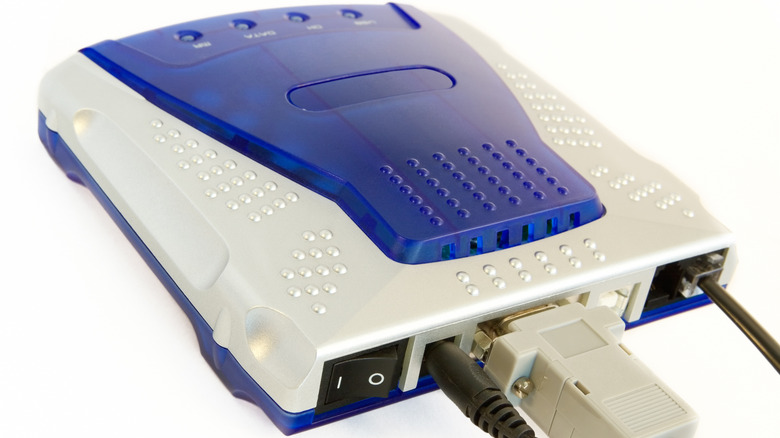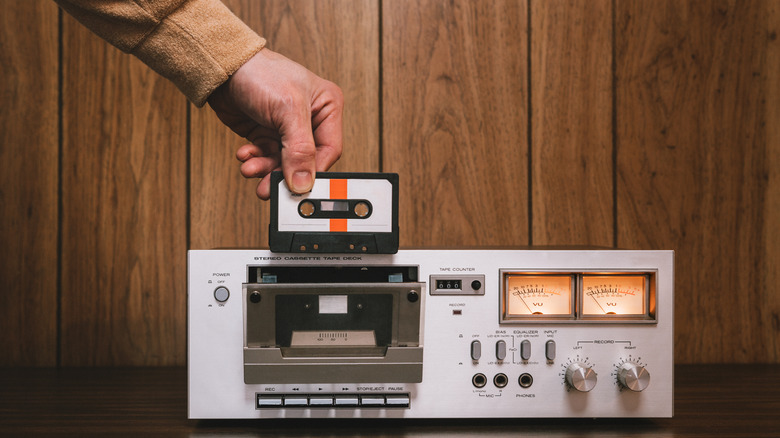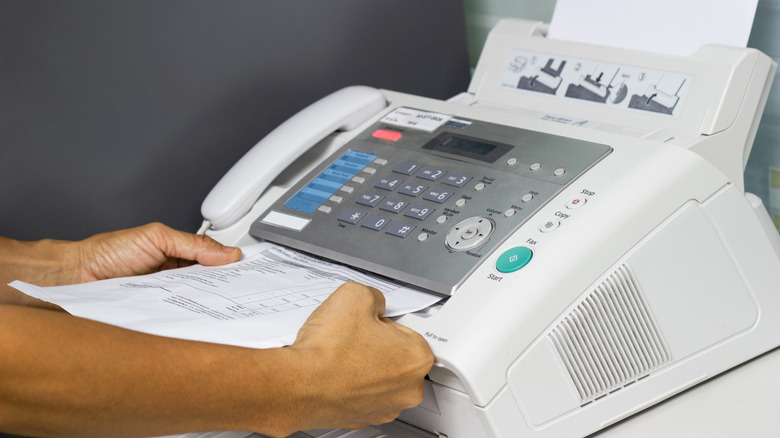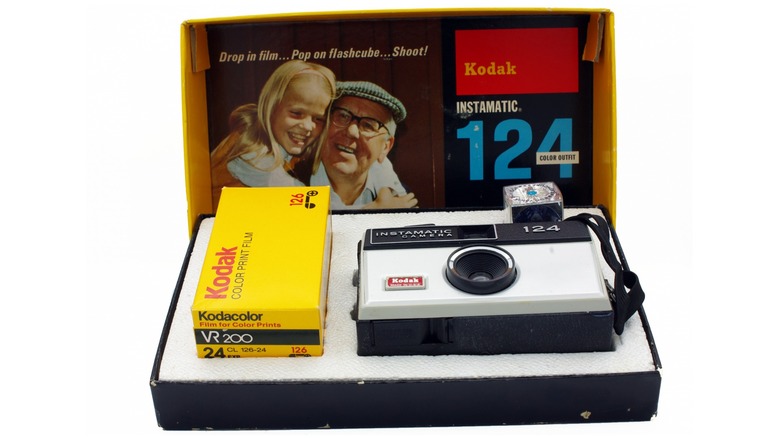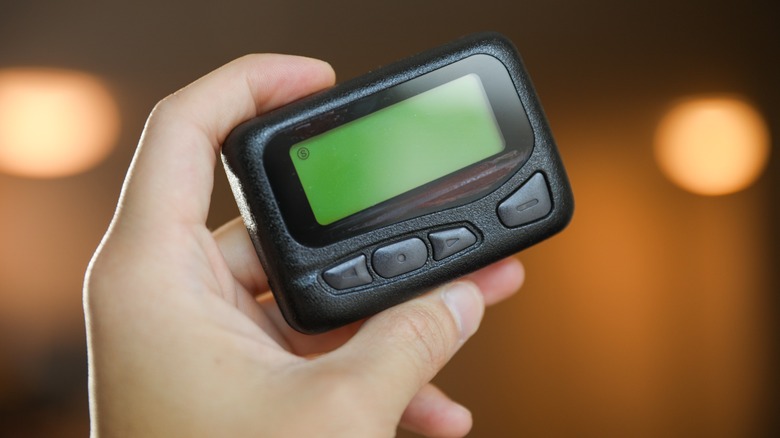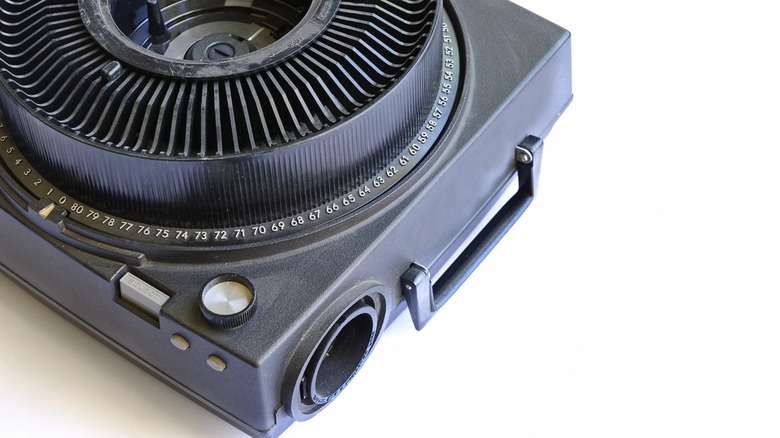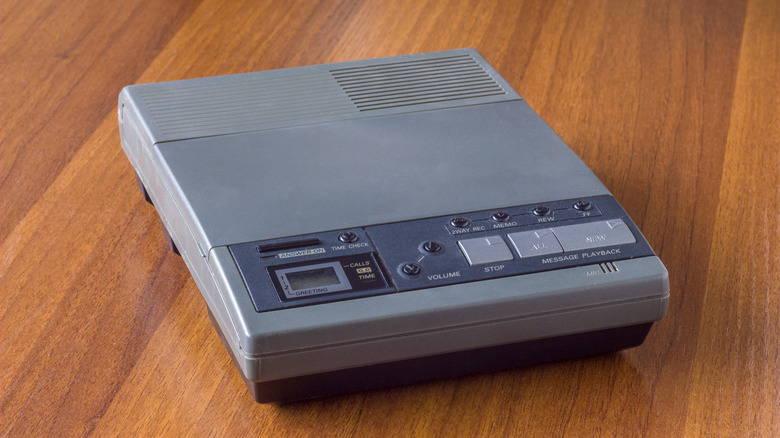10 Old Tech Devices Most Gen Z Kids Will Never Learn To Use
Gen Z is fortunate to be growing up in an era of unprecedented technological advancements, where smartphones, high-speed internet, video-on-demand, and virtual reality have become the norm. Their generation is poised to shape the future of technology in unimaginable ways.
However, it's always fascinating to take a moment and reflect on how far we have come by examining the outdated tech devices that previous generations, particularly Millennials, grew up with. Much of this tech, such as dial-up internet, VCRs, and cassette tapes, played a major role in the early lives of Millennials. However, all the tech on this list is so outdated and obsolete that most members of Gen Z won't ever need to learn how to use it.
Each year, the bar for what was deemed possible has been pushed further and further ahead, demonstrating the limitless potential for innovation. With that in mind, here are 10 old tech devices most Gen Z kids will never learn to use. While Gen Z may never need to learn to use these outdated devices, reflecting on their history provides a valuable perspective on the remarkable strides we have made and the boundless possibilities that lie ahead.
We'll leave you with an Abe Simpson quote from "The Simpsons," which will probably still be on the air long after Gen Z is gone. "I used to be with 'it,' but then they changed what 'it' was. Now what I'm with isn't 'it' and what's 'it' seems weird and scary to me. It'll happen to you!"
VHS and VCR
"Please be kind. Rewind."
Gen Z will never know the pain of sitting down on a Friday night after spending an hour at Blockbuster choosing a movie, only to find that whoever rented it before you never rewound the tape. Just hitting play on your streaming service is a much better system, but before streaming that was Blu-ray, DVD, LaserDisc, and finally VHS.
In the past, the VHS, or Video Home System, was the primary method for enjoying movies at home. This era was characterized by larger and heavier devices compared to today's sleek technologies. The VHS tapes were brick-like pieces of plastic that housed the magnetic film tape that stored a movie. Similar to movie projectors, but smaller and mostly enclosed. You had to be careful with the tape, however, because if it got damaged then a scratchy white line would appear in your movie.
By today's standards, the quality was absolutely terrible. In fact, it's actually hard to watch some films preserved on VHS these days since the quality of the tapes degrades over time. Even for those old enough to have fond memories of VHS movie nights, it's still probably best to leave them in the realm of nostalgia.
Rotary telephones
Rotary phones were old tech even for Millennials. Some may have grown up with one in their grandparent's house, but for the most part, the majority of Millennials grew up in a time when rotary phones were already being phased out in favor of button-operated phones.
Those button-operated phones were typically referred to as touch-tone phones, which offered faster dialing capabilities and advanced features such as mute, hold, and redial. Touch-tone phones also utilized tones to indicate the numbers were being pressed, hence the name.
In today's digital age, smartphones have rendered rotary phones completely obsolete. Even home phones, in general, are considered redundant. Although home phones and phone lines are still commercially available, they have largely lost their relevance and practicality in the face of widespread smartphone usage. Rotary phones can still be found, however, but usually only as antics or rotary phone replica kits that can be built as fun discussion pieces.
Floppy disks
At this point, the joke of a Millennial showing a kid a 3.5-inch floppy disk and it being mistaken for a 3D-printed save icon is just as outdated as floppy disks themselves.
Floppy disks served as the primary data storage medium before the emergence of USB drives and cloud storage. The storage sizes of these were minuscule in comparison to today's data storage standards. The standard 3.5-inch floppy held just 1.44 MB of data. That's it. If you needed to move file sizes larger than 1.44 MB, there were programs that could partition files into appropriate-sized blocks and use multiple disks. This is why some programs would require multiple floppy disks to install. The original "Doom" video game was 2.39 MB and actually required two disks to install.
To put things into perspective, the maximum file size for a TikTok video can reach 278.6 MB. In order to save just one TikTok video, you would need a staggering 194 3.5-inch floppy disks, necessitating the process of reloading the disk drive 194 times.
Floppy disks are now just fun nostalgia. Some people may have some laying around, but they've been largely replaced with cloud computing and USB drives. USB drives are even becoming less common when everything can be stored and recalled with cloud services like Google Drive.
Dial-up and analog modems
Gen Z will never recognize the sound of dial-up internet or know the pains of trying to use the phone when someone in the house was connected to the internet, and their lives are better for it. Even the sound of dial-up internet will send shivers down the spines of Millennials until the day we die.
Dial-up modems required a phone line to connect to the internet. Standard dial-up speeds were a mere 56 kbps, making tasks that we take for granted today excruciatingly slow. As a result, websites during that time were much simpler, consisting of a few images and hyperlinks. To get a glimpse of websites designed for dial-up speeds, you can visit the original "Space Jam" website, which has become a relic of internet history.
Gen Z may have trouble dealing with the slow internet, but to be fair, everyone would rage quit trying to use the internet with dial-up speeds today. Fortunately, the evolution of the internet then introduced DSL (Digital Subscriber Line) internet to replace dial-up, providing faster speeds while still utilizing phone lines. Cable modems then emerged, surpassing both dial-up and DSL in terms of speed and bandwidth. Presently, cable and satellite connections dominate, benefiting from vastly improved infrastructure.
Cassette tape players and CD players
Cassette tape players were widely used before the emergence of CDs and MP3 players for listening to music. Growing up with digital music, Gen Z might find it baffling to comprehend the concept of rewinding a tape to replay a song or even having to buy full albums from a record store.
Inside the cassette, a magnetic tape stored all the music data. The most common tape sizes were 60, 90, and 120 minutes, with one side of the tape holding half of the data and the other side containing the remaining portion.
There weren't a lot of options when choosing a portable cassette player. There was basically one brand — the Walkman. Cassette tapes were notorious for breaking and experiencing issues with the magnetic tape bunching up or unwinding. This led to the infamous "pencil trick," where one would use a pencil to manually wind the tape back into place. Eventually, the Walkman was replaced by its CD counterpart, the Discman. One of the major flaws of the Discman was that it had to be on a stable surface. Despite it being portable, it would still skip if it was jostled too much. This led to playful tapping on a friend's Discman to annoy them.
Eventually, MP3 players would replace both. There was even a short time when the Zune and iPod competed before iPod eventually won the market. Finally, like a ton of other gadgets, smartphones made all of them obsolete.
Fax machines
Fax machines were once widely utilized in the 1980s and 1990s for transmitting documents via telephone lines. However, they have been largely supplanted by electronic methods such as email and cloud storage. During their heyday, office equipment was often large and cumbersome, with combined scanners and fax machines occupying significant counter space or existing as massive self-contained units.
Fax machines served as a precursor to email attachments, providing a quick way to electronically send documents. One would scan a set of documents at one end and they would be printed out at the receiving location. All information was transferred through telephone lines, necessitating the dialing of a phone number.
Fax machines also gave rise to some nasty office pranks. Faxes consisting solely of solid black ink would be sent and taped together to create an infinite loop. The targeted fax machine would endlessly print solid black pages until its ink ran out. Curiously, printer ink remains one of the most expensive liquids in the world, and this prank could swiftly deplete a department's budget overnight.
Today, finding a functional fax machine outside of a junkyard or tucked away in a forgotten corner of a thrift shop is a challenge. Functionally, fax machines have been replaced by email, and even email has largely been surpassed by text messaging services like WhatsApp and Telegram. However, despite their obsolescence, many U.S. government agencies still accept faxes as a valid method for submitting documents. While predominantly redundant in today's electronic age, the fax machine persists.
Film cameras
Before the advent of digital cameras, TikTok, Instagram filters, and Photoshop, the only way to alter or enhance photographs was through the use of a darkroom. Film cameras were the sole means of capturing images, requiring people to carry bulky cameras and a separate bag for rolls of film.
Once a shot was taken with a film camera, it had to be developed, and there was no way of knowing if you had a clear picture until after this process was completed. This led to the sitcom-level joke of people spending all day taking photos and forgetting to take the lens cap off.
Artists like Jerry Uelsmann achieved remarkable results by skillfully layering multiple negatives together, creating surreal analog imagery. Their work is even more impressive when considering the absence of Photoshop or other post-processing tools. Photographers had to painstakingly expose multiple negatives onto photo paper, with a single photo sometimes taking hours to create.
These days, film photography is a dying art. Even the most dedicated hipsters may find it challenging to pursue due to the unavailability of essential chemicals and products from major companies like Kodak, which have shifted their focus to digital technologies. Beyond that, many people are unaware of the intricacies involved in film photography. The need to purchase and load film, coupled with the cost of development, has made film photography a niche hobby that many members of Gen Z will likely never experience.
Pagers
Believe it or not, pagers — or beepers, as they were sometimes called — used to be status symbols. It was trendy to be seen wearing one, leading to the proliferation of pager belt clips. Before they were low-tier jokes in movies like "The Hangover," pagers were the best way to keep in touch and contact someone when they weren't at home. Sir Mix-A-Lot even wrote a rap called "Beepers." It didn't have the impact on hip-hop that "Baby Got Back" did, but you get the picture.
Pagers were compact devices typically worn on belts. When someone needed to reach you and you were unavailable, they could dial your pager's number. Subsequently, the pager would emit a beep, indicating the caller's phone number for you to return the call. Essentially, pagers acted as wearable caller ID devices that lacked the ability to make direct phone calls.
Today, pagers have become relics of specialized, outdated technology. Unlike cell phones, they functioned as receive-only devices, requiring less extensive network coverage. Although pagers still operate in various parts of the United States, their complete obsolescence is inevitable as they are gradually phased out.
Slide projectors
Slides were an early method for viewing photographs, initially printed on glass plates and used in combination with a light source to project images onto a wall. Kodak played a significant role in popularizing slides as a household name. Individuals would have their photos developed as slides, load them into slide projectors, and create picture presentations similar to modern-day PowerPoint, much to the delight or annoyance of those around them.
However, in contemporary times, slide projectors have primarily become props seen in 1980s movies. Perhaps the most recent relevant appearance of a slide projector was during the remake of Stephen King's "IT," where Pennywise emerged from an image projected by a slide projector.
Slides and slide projectors were considered outdated technology even before Millennials came of age. Millennials primarily used disposable cameras or film cameras that produced negatives for photographs. Their exposure to slides may have been limited to educational settings, such as biology classrooms, where slides were used to display images.
Similar to many other obsolete technologies, smartphones have rendered slide projectors completely irrelevant. Even the subsequent advancements that replaced slide projectors have largely become outdated. The practice of printing film pictures has also become far less common as a result of our ability to store an unlimited number of photos on a pocket-sized device.
Answering machines
"You've reached SlashGear. Leave your message at the beep." Beep!
Answering machines were devices used to record messages when individuals were away from home before the advent of voicemail. These separate devices employed tape recorders to capture messages left on home telephones, enabling users to listen to them at a later time. Although some cell phone services still offer the option to function as a voicemail inbox, they are rarely utilized nowadays. If someone fails to answer their phone, there are alternative methods such as texting or leaving instant voice notes.
One of the limitations of answering machines was the need to regularly delete messages to avoid filling up the storage. Interestingly, this feature was retained during the era of flip phones. Despite increased storage capacity, flip phone cell providers typically only stored about five to 10 messages before considering the device full and ceasing to record further messages.
The concept of logging into a specific backend function of a phone to access voice messages is now considered outdated. Messaging services like WhatsApp, Facebook Messenger, and Telegram have rendered the need for an answering machine obsolete. Nowadays, individuals connected to the internet generally have a centralized hub for messages and calls, making a separate service solely for listening to missed call messages as useful as a pager.
